What better thing to do on a chilly Sunday afternoon than explore a beautiful old cemetery? Abney Park in Stoke Newington is one of London’s gems – as well as being one of the city’s “Magnificent Seven” Victorian cemeteries, it’s a peaceful space that members of the local community have worked hard to make into a welcoming place for visitors. It was founded in 1840 as the first completely non-denominational burial ground in England and is the final resting place of many well-known nonconformists. Bunhill Fields, which for nearly two centuries had been the main site for nonconformist burials in London, closed in 1854, and Abney Park took over as the most prominent burial place of nonconformists. Probably the most famous people to be buried at Abney Park are William and Catherine Booth, founders of the Salvation Army.

The space that is now Abney Park was originally the site of two grand houses – Fleetwood House and Abney House – and their gardens. Abney House, which was to give its name to the cemetery, was the home of the Abney family, lords of the manor of Stoke Newington. The famous nonconformist hymn writer Isaac Watts lived at Abney House in the 18th Century, and it was his link with the site that initially helped to make the cemetery popular with nonconformists. A statue of Watts still stands proudly in the cemetery today.

Unlike many other large cemeteries from the early Victorian period, which have consecrated areas set aside for members of the Anglican church, Abney Park is entirely non-denominational and the whole cemetery was available for members of all denominations. For many years, the Congregational church was closely associated with Abney Park – one of the founders, George Collison, was a prominent member of the Congregationalist church and helped to raise the required money to finance the cemetery. Fleetwood House and Abney House were both used as educational institutions – Abney House was used as a Wesleyan training college until its demolition in 1843, and Fleetwood House was home to the Newington Academy for Girls, which was set up by the Quakers and is notable for having an unusually wide curriculum for girls (for the time) and being the first school ever to have a school bus.
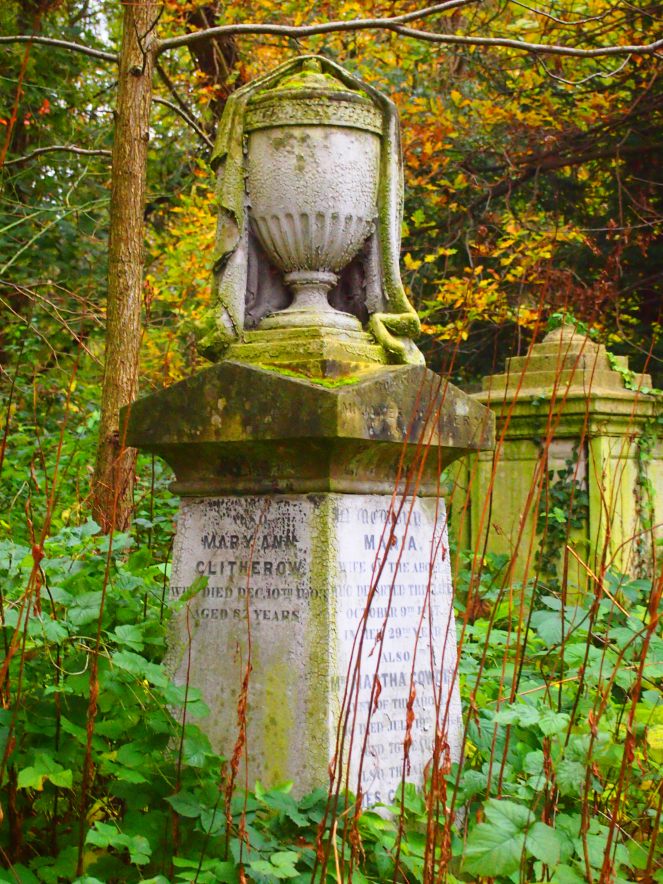

The main entrance to Abney Park is built in the Egyptian Revival style – a bold choice, for although Egyptology was hugely popular at the time, the entrance to Abney Park was the first time that Egyptian designs had been used for a large-scale public space. Designed by William Hosking, the columns are topped with lotus flower designs. The use of the Egyptian-inspired design helped to promote Abney Park’s novel approach as a non-denominational cemetery and park.

The design of the cemetery at Abney Park was inspired by a garden cemetery in America, Mount Auburn Cemetery close to Boston, Massachusetts. Mount Auburn had been founded in 1831 and had an emphasis on providing burial space in a landscaped garden environment – very different from churchyards or colonial-era burial grounds. Mount Auburn was also the first cemetery to use Egyptian-inspired designs. Abney Park, of course, was being set up to relieve the pressure on London’s overcrowded inner-city burial grounds, but when it was founded in 1840 it was also laid out as an arboretum, with assistance from respected local horticulturalist George Loddiges. Over 2,500 trees were planted, including some varieties that had not been planted in Britain before. An impressive rosarium (rose garden) was also planted, with over 1,000 varieties of roses.
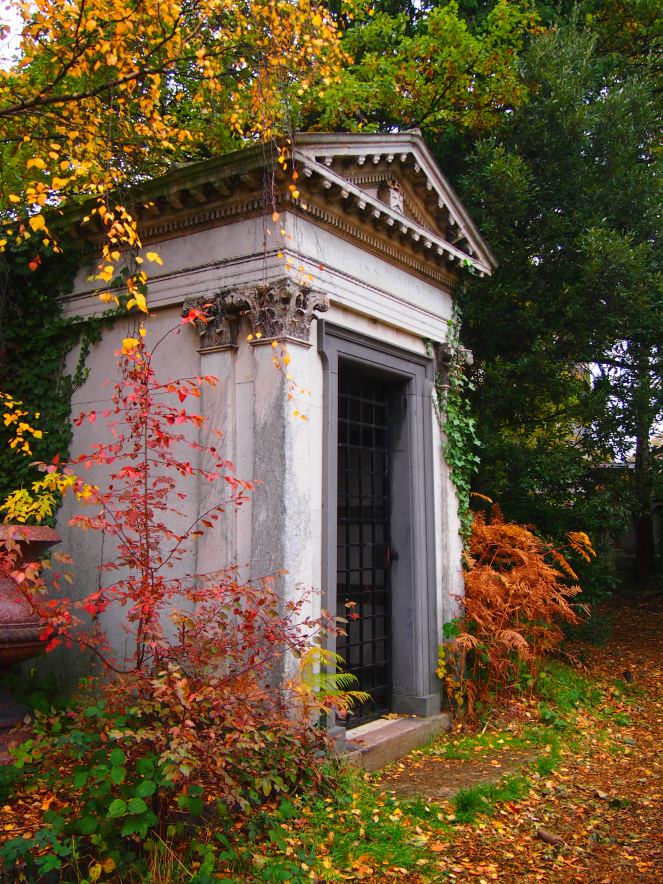
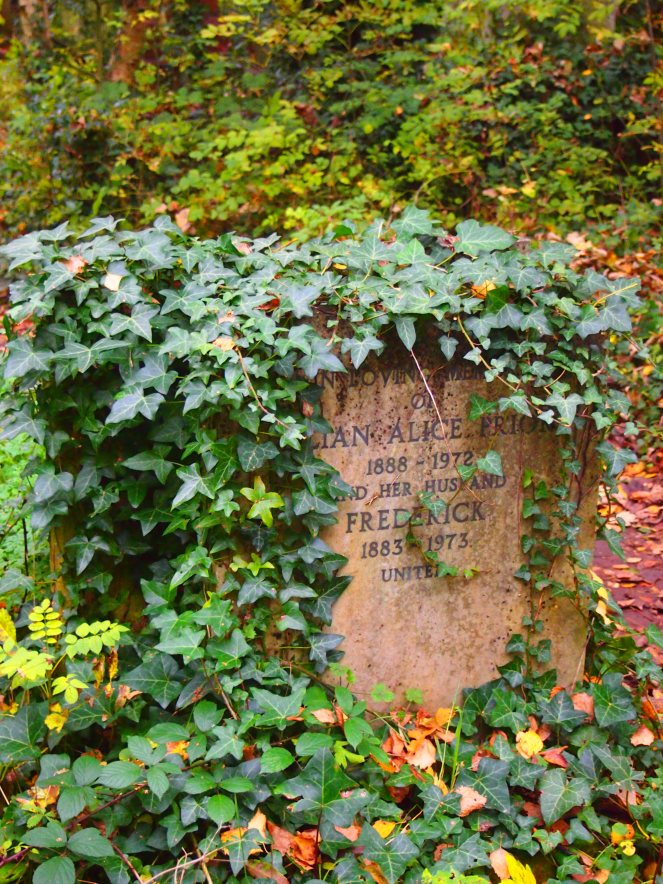
This year, the Victorian Society included Abney Park’s cemetery chapel on its list of the top ten most at-risk Victorian buildings in Britain. The chapel has been derelict for many years and has often been singled out as being a hotspot for crime and antisocial behaviour. Its heritage value lies in the fact that it is the world’s oldest non-denominational chapel. Construction of the chapel began in 1840, and architect William Hosking ensured that the design of the building did not show any bias towards a particular denomination. The chapel was never consecrated, and a single space within the building catered for members of all denominations – quite different from many other large cemeteries where separate chapels were built for Anglican and Dissenting funerals.


Originally, the chapel’s windows contained stained glass with designs inspired by the rose garden in the cemetery, but sadly none of this glass remains today due to vandalism.

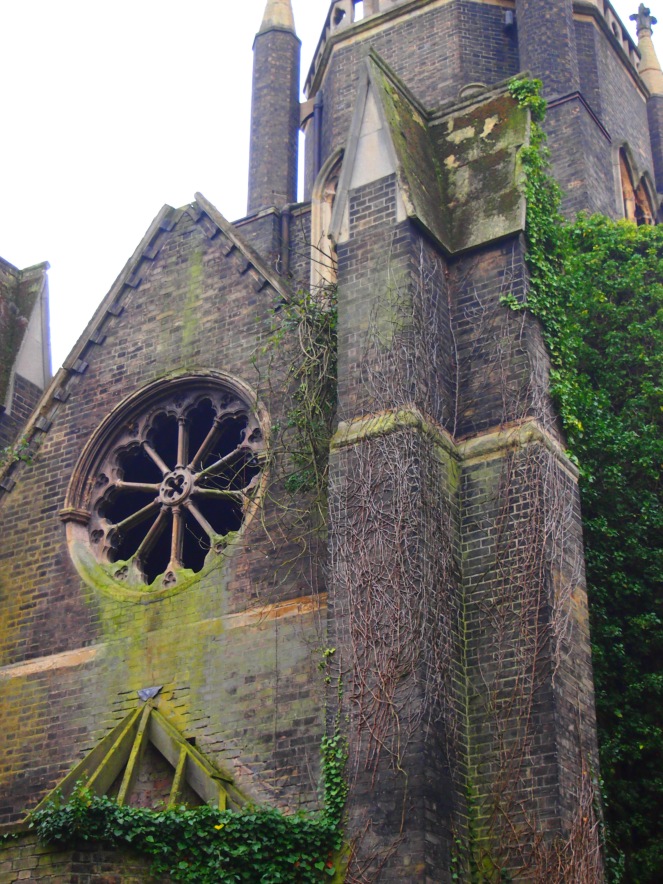
The company running Abney Park went bankrupt in the 1970s, and since then the site has been managed by the local council. Due to its large numbers of plants and trees, Abney Park is a haven for wildlife and since 1993 has been managed as a nature reserve. Many of the trees from the original arboretum planting still survive, and many species of birds, butterflies, insects and fungi thrive within the cemetery. The gravestones and memorials of Abney Park are also cared for, and many of those damanged by time and vandalism have been restored. The cemetery often plays host to different events, ranging from music to woodworking, and classes are held for local children to raise awareness of the wildlife on the site.


Abney Park is home to many distinctive graves and memorials – the sleeping lion memorial to menagerist Frank Bostock has already been covered in this blog. Many of those associated with the movement to abolish slavery rest at Abney Park – many prominent members of the abolitionist movement were Quakers or members of other nonconformist groups. Thomas Binney, whose grave is shown below, was known as the “Archbishop of Nonconformity” and is featured in a painting in the National Portrait Gallery which depicts him chairing the 1840 Anti-Slavery Convention.
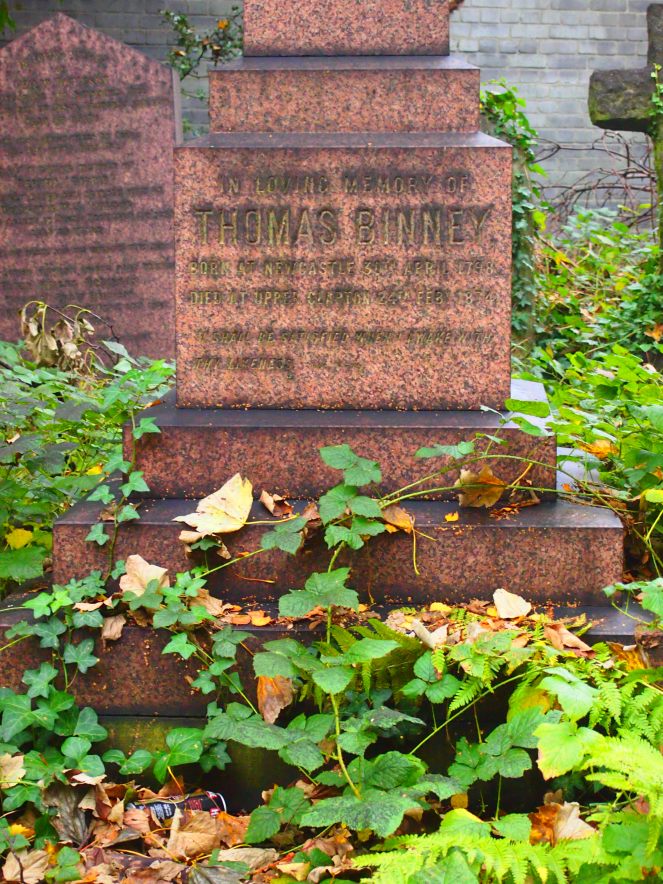
Today, many British cyclists enjoy huge success in sporting events such as the Olympics. An early professional cyclist is buried at Abney Park, and his grave is still maintained by well-wishers. Tommy Hall was a professional track cyclist who was active between 1900 and 1914, and set a world record in 1903 for motor pacing.

One of the most respected writers of the Harlem Renaissance also rests at Abney Park. Eric Walrond was born in Guyana and grew up in Barbados and Panama, but moved to New York at a time when the area of Harlem was experiencing a cultural renaissance. He attended Columbia University, and in 1921 was awarded a prize sponsored by Marcus Garvey for his piece “A Senator’s Memoirs.” Following this success he worked as an editor for various publications that sought to promote African-American contributions to politics and the arts. He wrote a large number of short stories, some of which were published in the book Tropic Death. His work was influenced by his early years growing up in the Caribbean, where he saw the legacy of the slave trade and the harsh lives that many Afro-Caribbean people lived. He moved to England in the 1930s, and died in London in 1966.
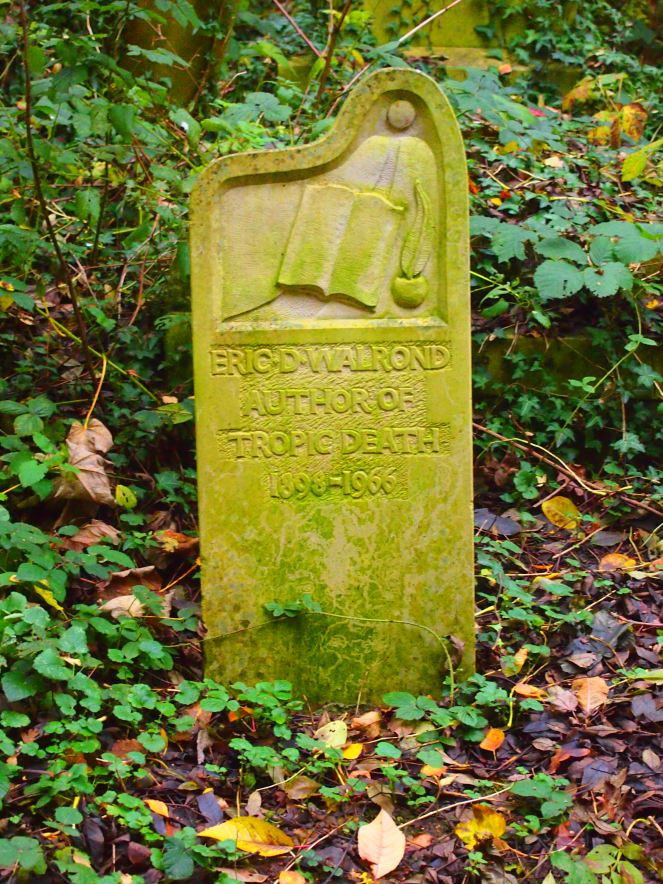
A large memorial commemorates those killed in air raids on Stoke Newington during the Second World War. This Blitz memorial was recently restored, and carries the names of civilians who died, including more than 160 who died in a single incident. On 16th October 1940, a packed air raid shelter on Coronation Avenue suffered a direct hit from a high explosive bomb. A number of those killled were Jewish refugees who had fled to London to escape from the Nazis. An eyewitness account of this bombing can be read here.

Over the years the neat planting of the garden cemetery has become overgrown, and after the Second World War Abney Park became neglected and vulnerable to vandalism.
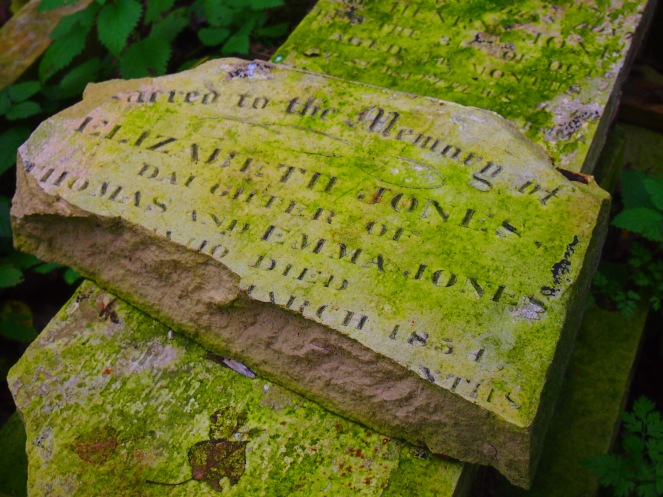
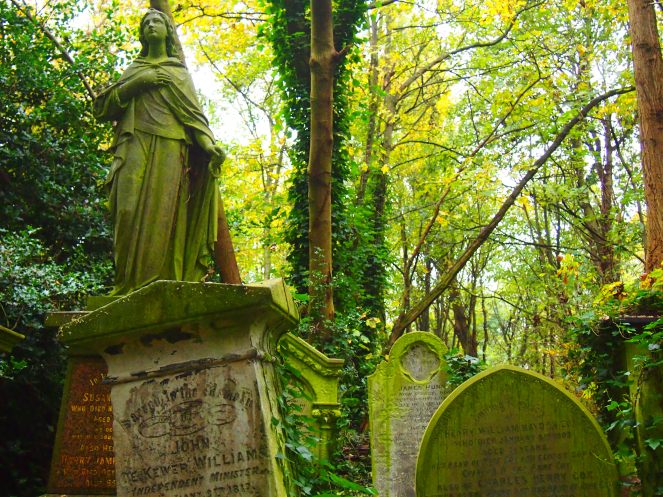

Memorials in the cemetery range from grand and imposing to small and heartfelt. As with every cemetery, each grave tells a story.
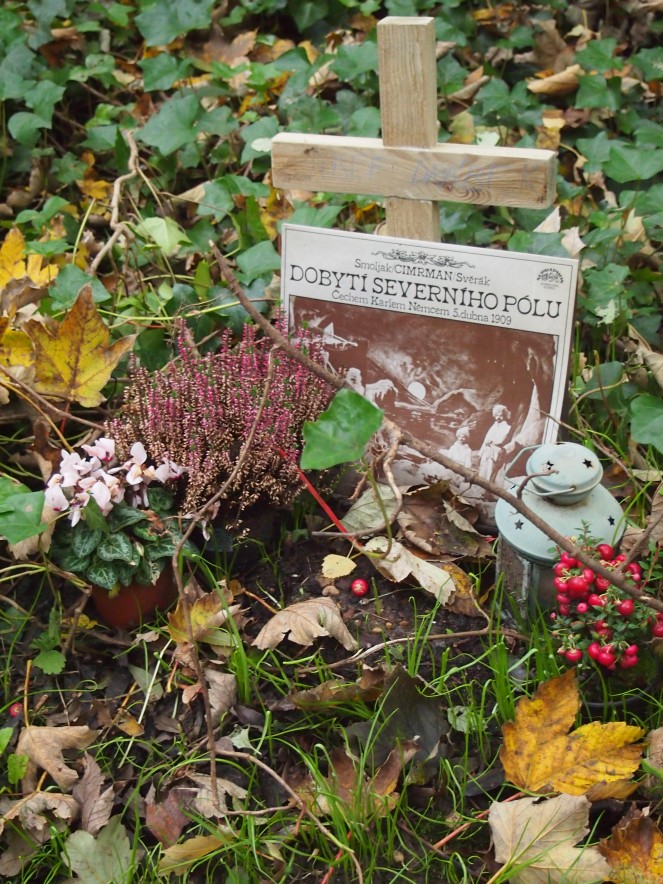
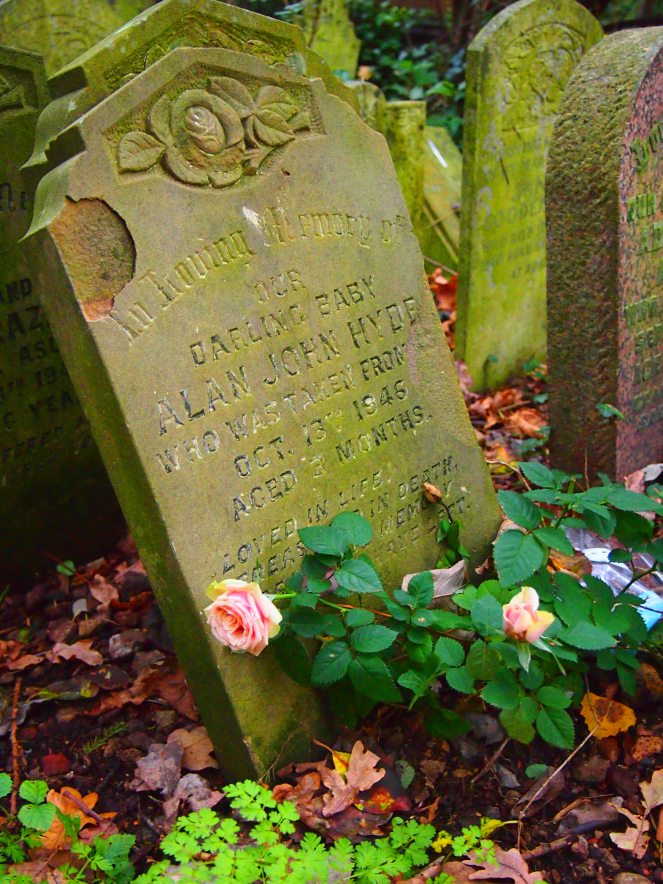


Today, Abney Park has returned somewhat to its original purpose of being a park and educational space as well as a burial ground. The Abney Park Trust have worked hard to maintain the site and restore damaged memorials. Abney Park is a wonderful place to visit – full of fascinating graves set in beautiful woodland. Situated at the heart of Stoke Newington, it has remained a pleasant park as well as a cemetery for almost 180 years.
Guided tours of Abney Park take place on the first Sunday of every month at 2pm, and cover the history of the cemetery as well as the wildlife found there. There is also a Winter Fun Day being held on 13th December.
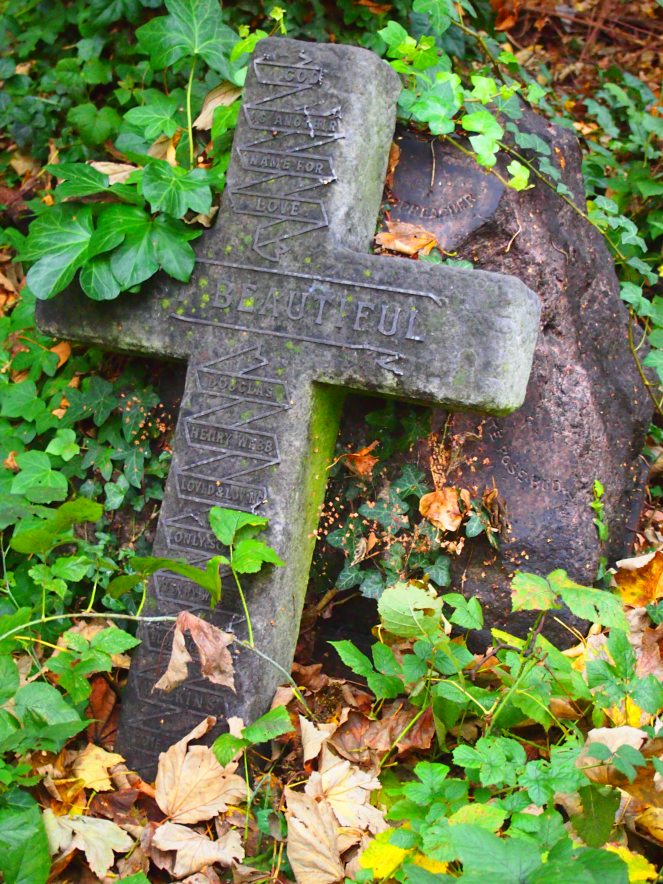
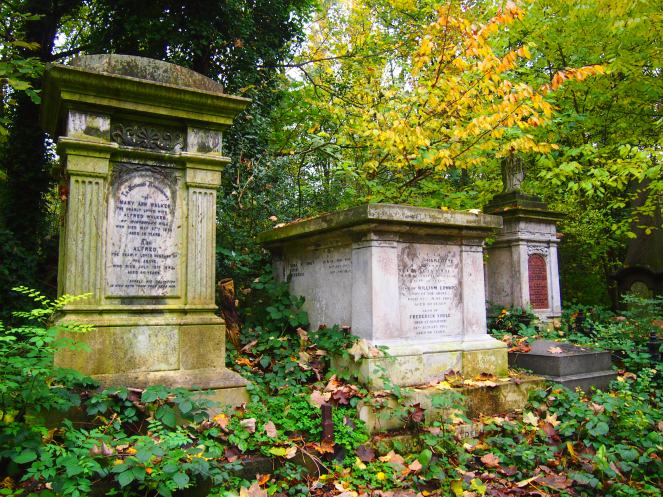
References and further reading
Abney Park Trust http://www.abneypark.org/
Abney Park Cemetery Chapel in dire need of rejuvenation, East London Lines, 9th October 2014 http://www.eastlondonlines.co.uk/2014/10/abney-park-cemetery-chapel-in-dire-need-of-rejuvenation/
Hackney’s World Record Setting Cyclist, Cycling Club Hackney, 16th December 2011 http://cyclingclubhackney.blogspot.co.uk/2011/12/hackneys-world-record-setting-cyclist.html
Walrond, Eric (1898-1966) http://www.blackpast.org/gah/walrond-eric-1898-1966


Very interesting post. I wasn’t aware of the history of the houses that were previously built on the site. I did notice recently that the cemetery was in the news (possibly exaggerated):
http://www.ibtimes.co.uk/homeless-gangs-hold-drug-fuelled-orgies-abney-park-cemetery-north-london-1473807
LikeLike
I also came across that story while I was researching this post! The claims being made are rather extreme but I hope that any problems are dealt with and that people aren’t put off visiting, as Abney Park is such a fascinating place.
LikeLiked by 1 person
A fascinating post, thanks. I have not visited this cemetery but looks well worth a visit. Sad though to see the chapel in such a state.
LikeLike
It’s a lovely place to visit and is especially beautiful at this time of year. But yes, it’s such a shame about the chapel. I hope that its plight being highlighted in the media again this year will help the Trust to find funds to repair and restore it.
LikeLike
Hi Caroline,
Great post and some lovely photographs, looks like a fascinating place to visit.
Really enjoy the blog 🙂
LikeLike
Thank you! Abney Park is a lovely place to visit – I definitely recommend it!
LikeLike
There are few things so bittersweet as an overgrown cemetery in autumn. Beautiful post.
LikeLike
Thank you! So many of the gravestones told such sad stories.
LikeLike
A lovely post, thanks. The site is owned by the London Borough of Hackney but most management activities are performed (as you say above) by the Abney Park Trust (www.abneypark.org), a community-run charitable trust. We rely on donations of time, money and support to keep Abney Park free and open to all every day.
Regarding the ridiculous ‘story’ linked to by another commenter, one only has to read it to realise how the claims range from the completely overblown to utterly fantastical. There are some instances of antisocial behaviour at Abney, mainly street drinkers getting noisy and annoying, but thousands of visitors enjoy the beautiful, peaceful green spaces of Abney Park without indicident every year.
I hope this post encourages others to come and enjoy this unique oasis of nature and memory in the heart of urban London.
Kirsten Foster
volunteer
Abney Park Trust
LikeLike
Thanks for commenting, Kirsten! I came across the recent article about antisocial behaviour whilst writing up this post, and thought it sounded rather over the top. I think pretty much every park and open space has problems with antisocial behaviour from time to time and I hope that articles such as that one don’t put people off visiting Abney Park as it’s a beautiful place.
LikeLike
I think this site is fascinating. I really love the image of the chapel window without the stained glass, it actually looks glazed with the beautiful autumnal colours of the trees behind it. Keep up the great work Caroline!
LikeLike
Thank you!
LikeLike
Fascinating piece, thank you. Another famous person buried there is the publisher and satirist, William Hone, who is something of a hero of the British free press, having taken on the oppressive government of Lord Liverpool. I think his headstone is quite faded so I haven’t yet been able to locate his grave.
LikeLike